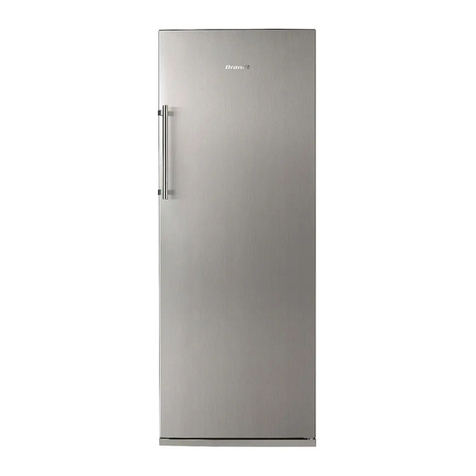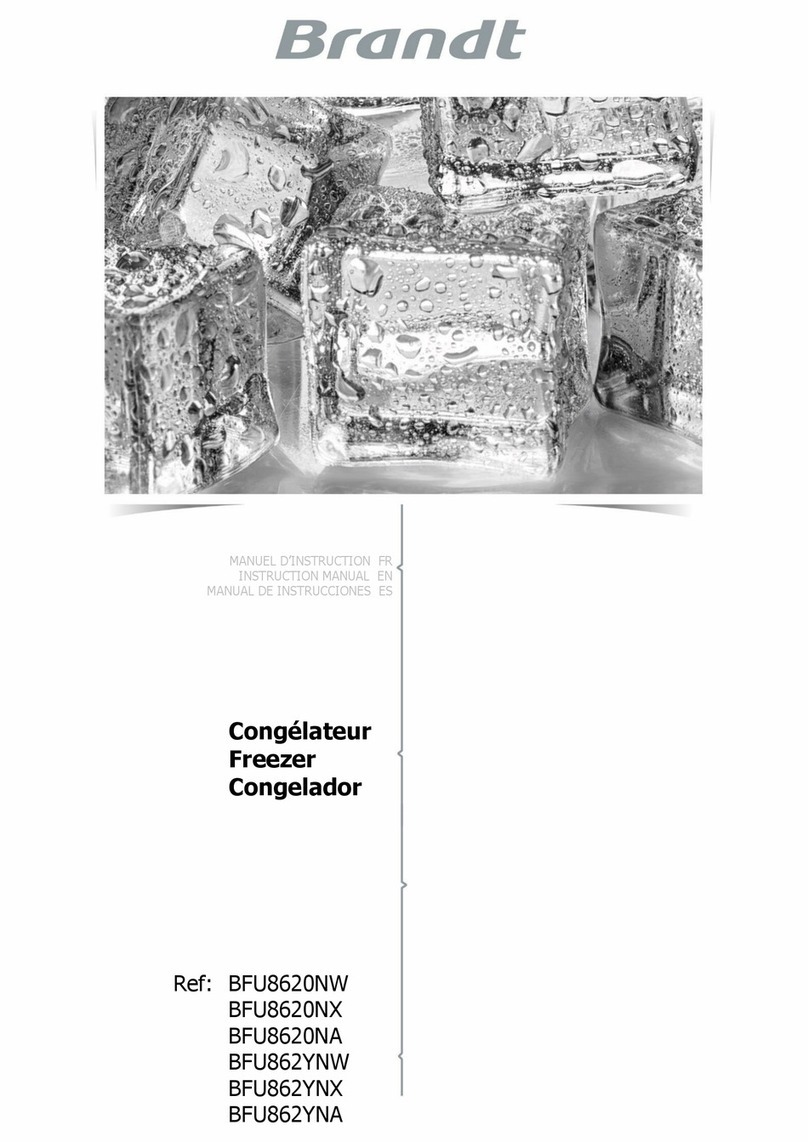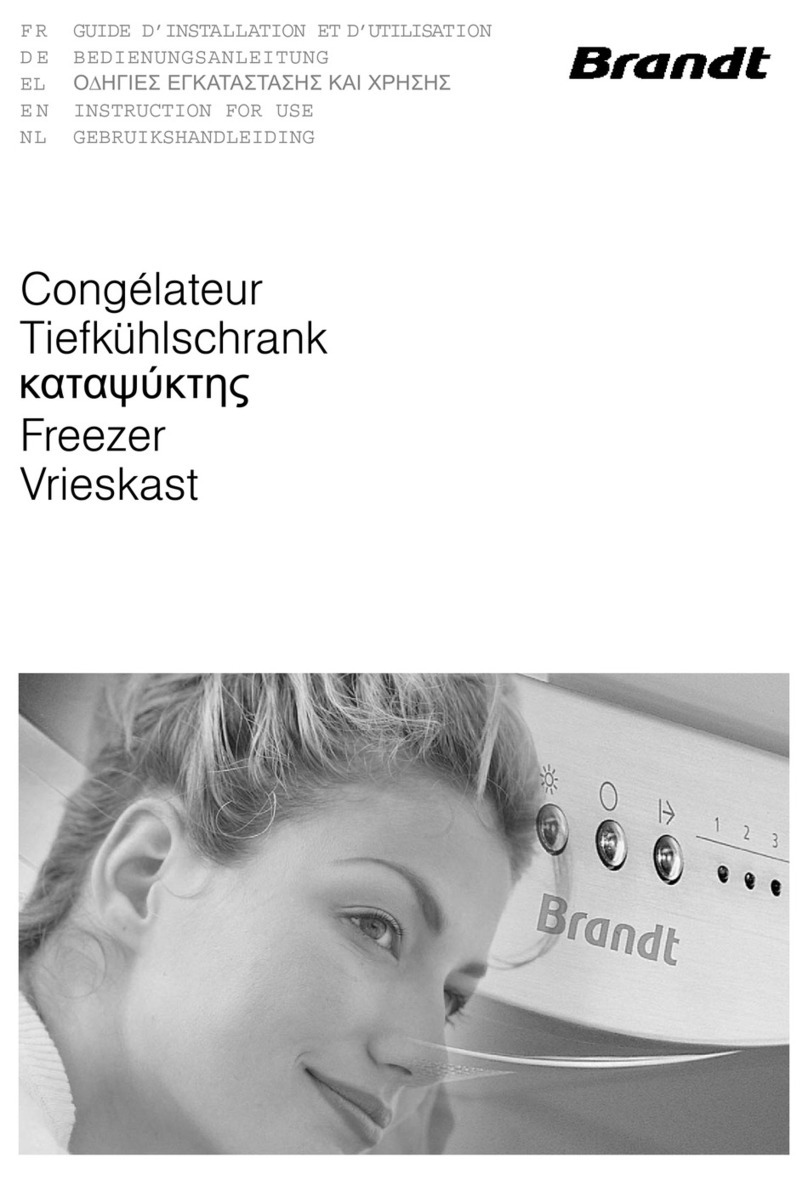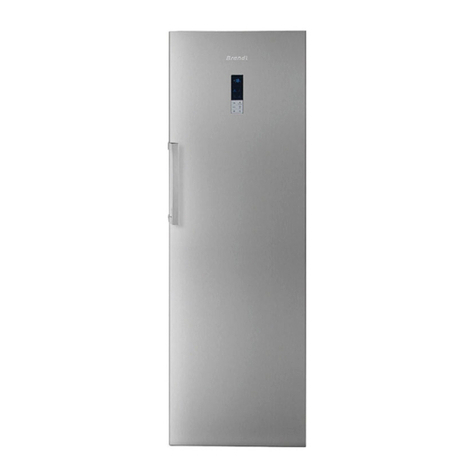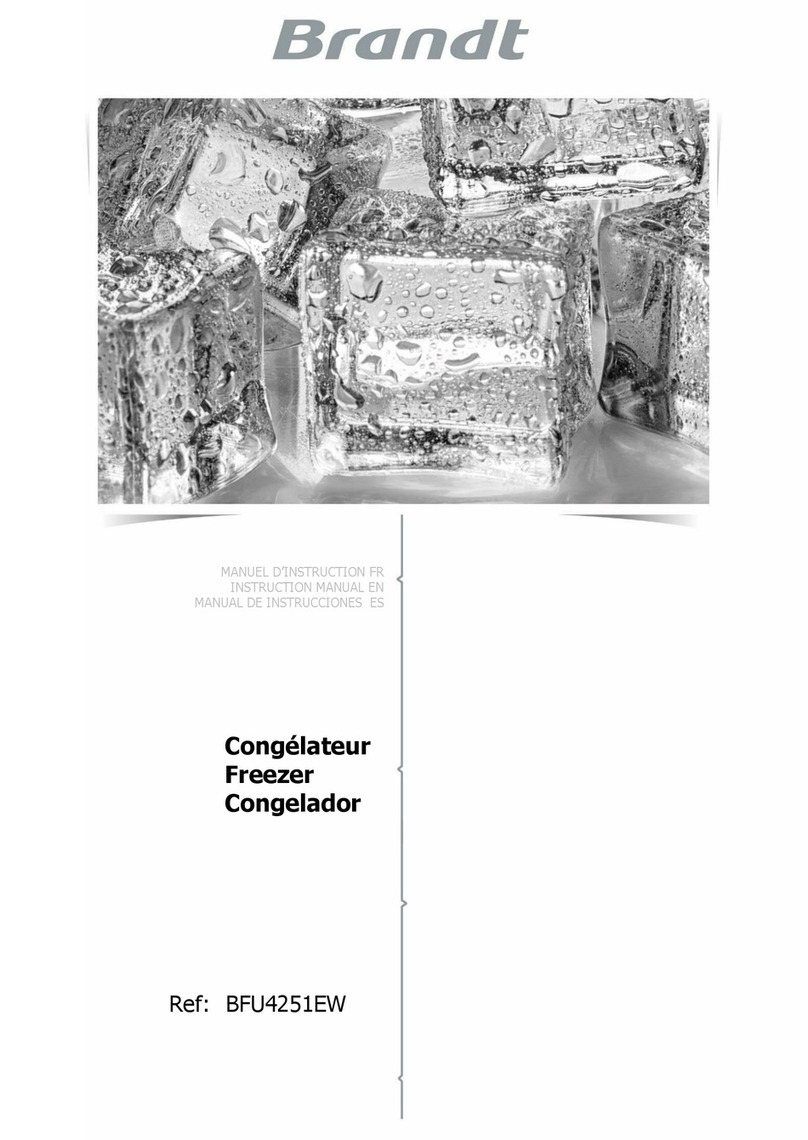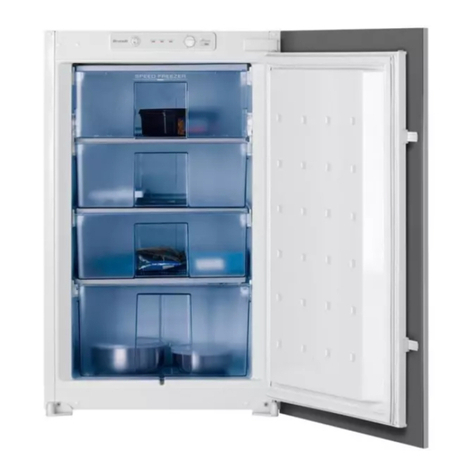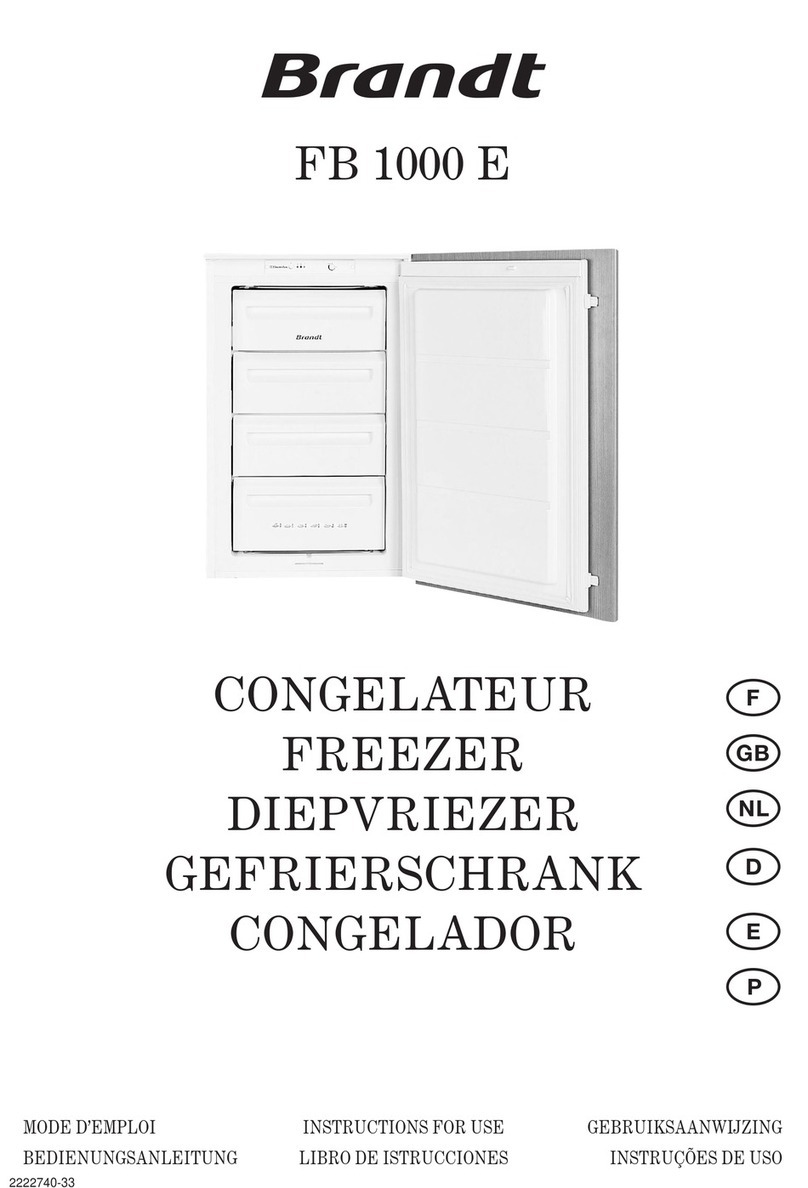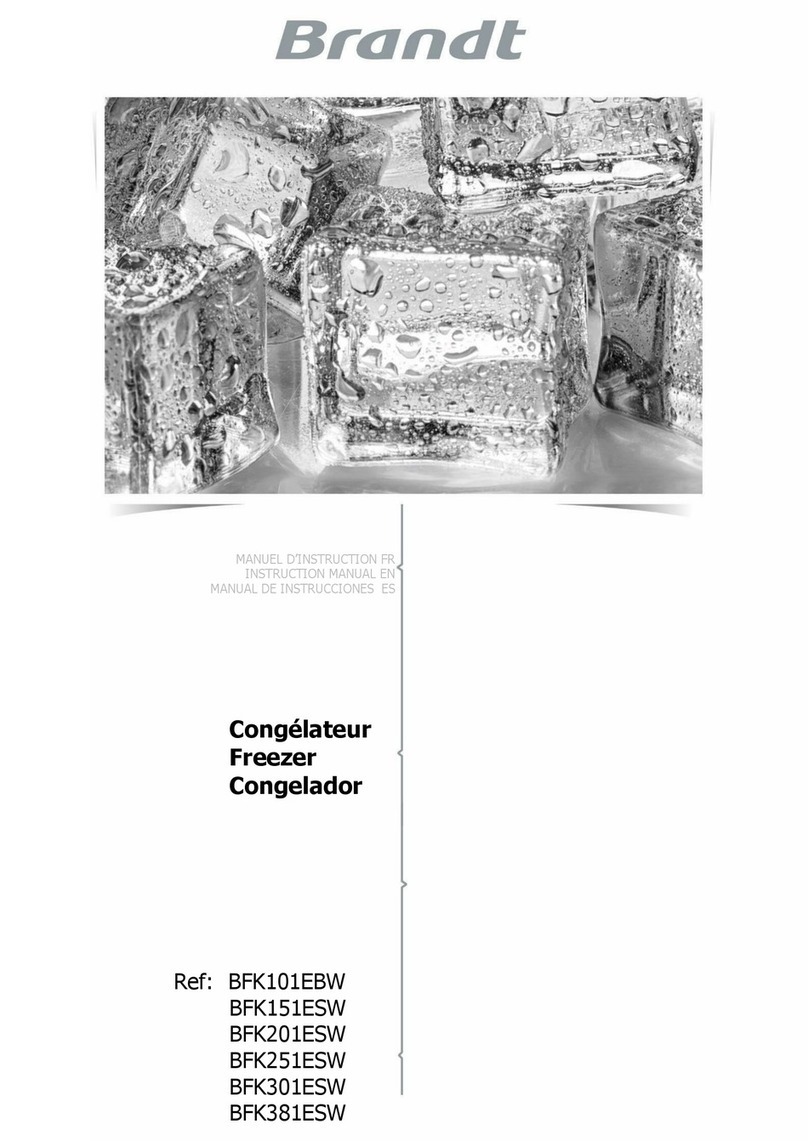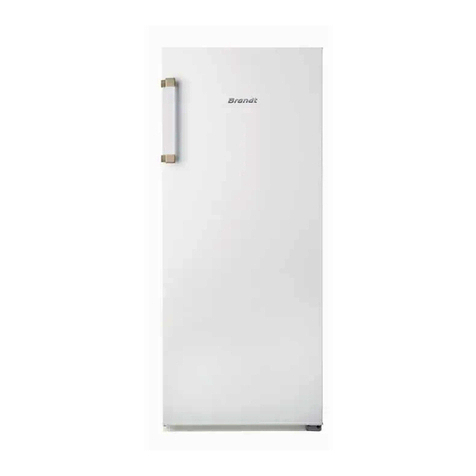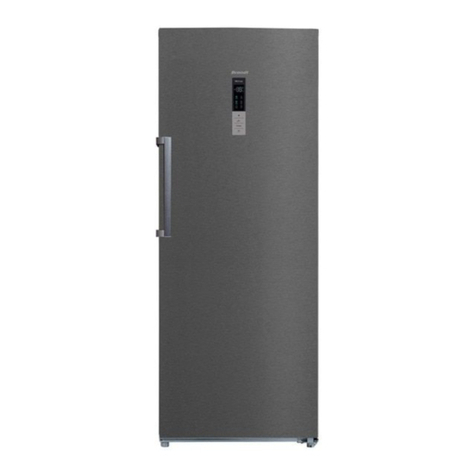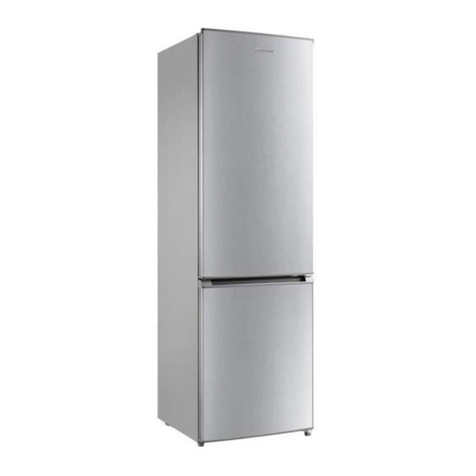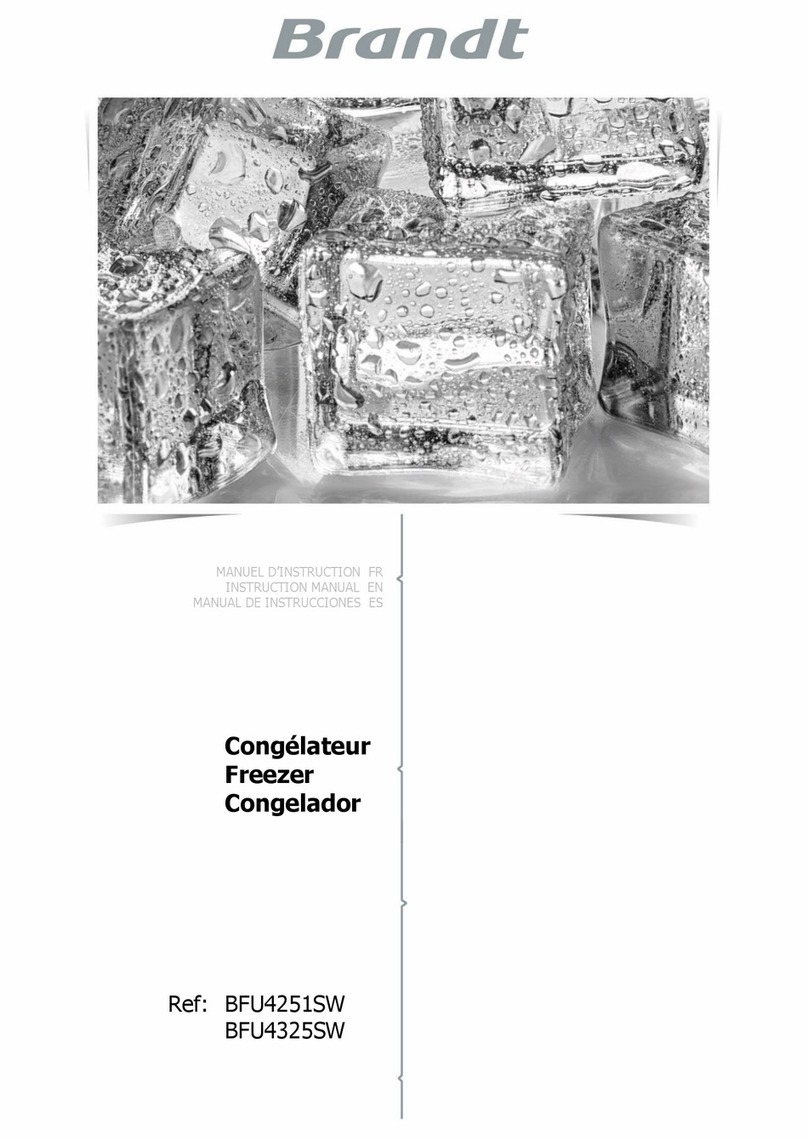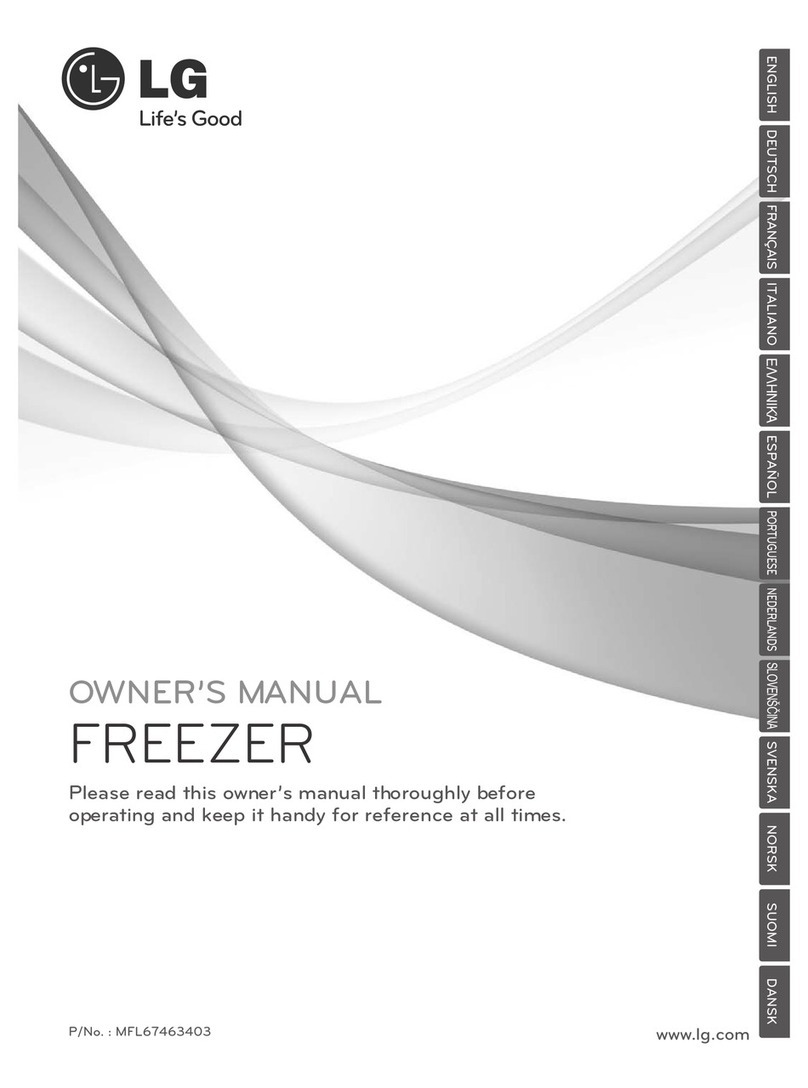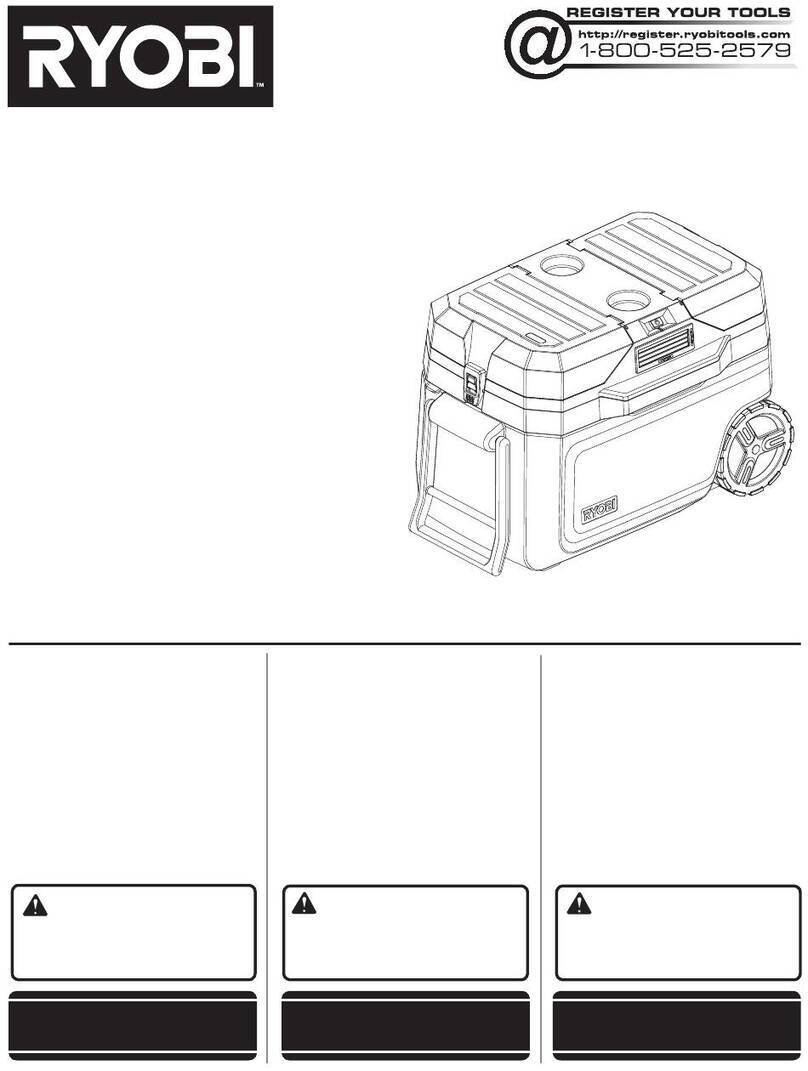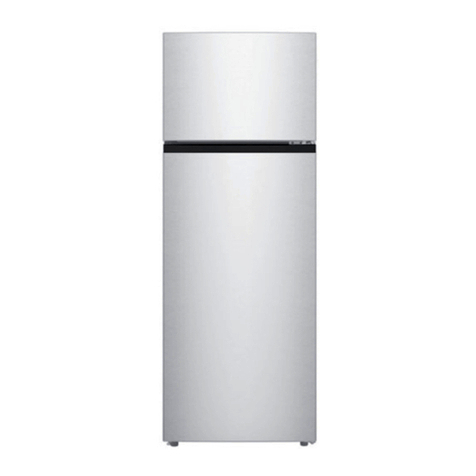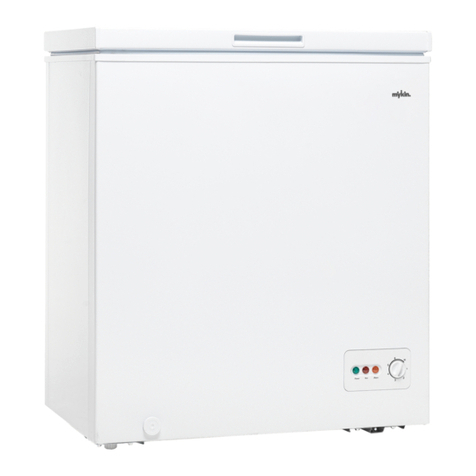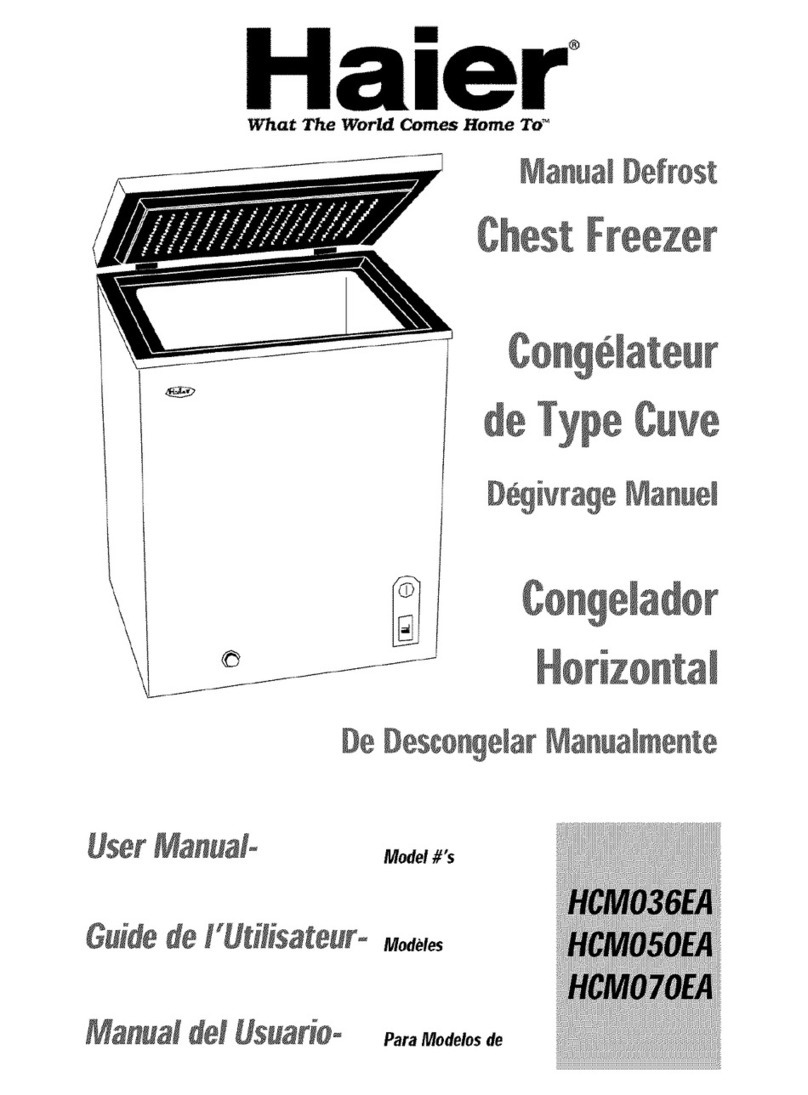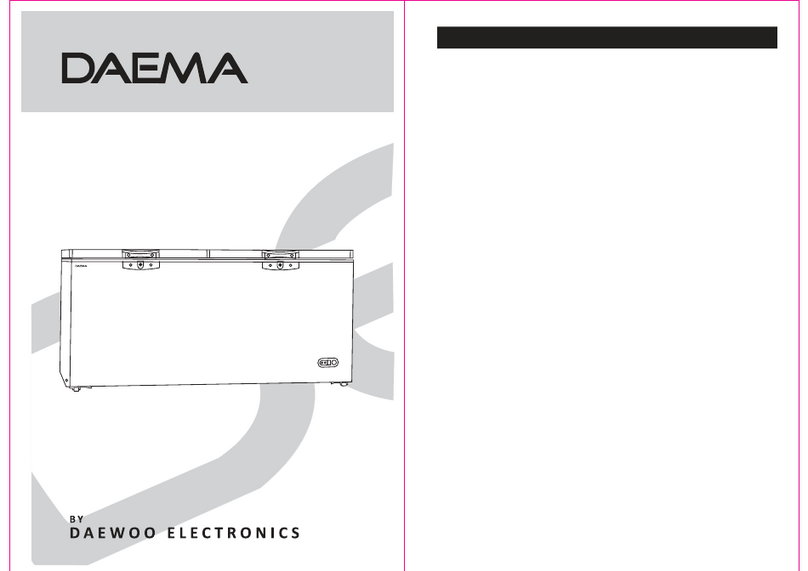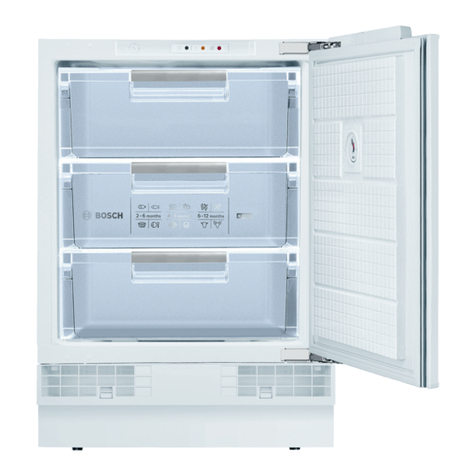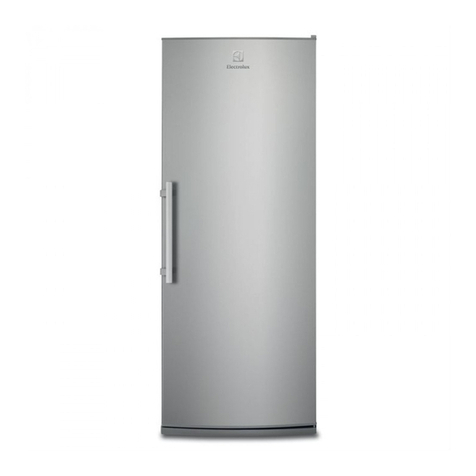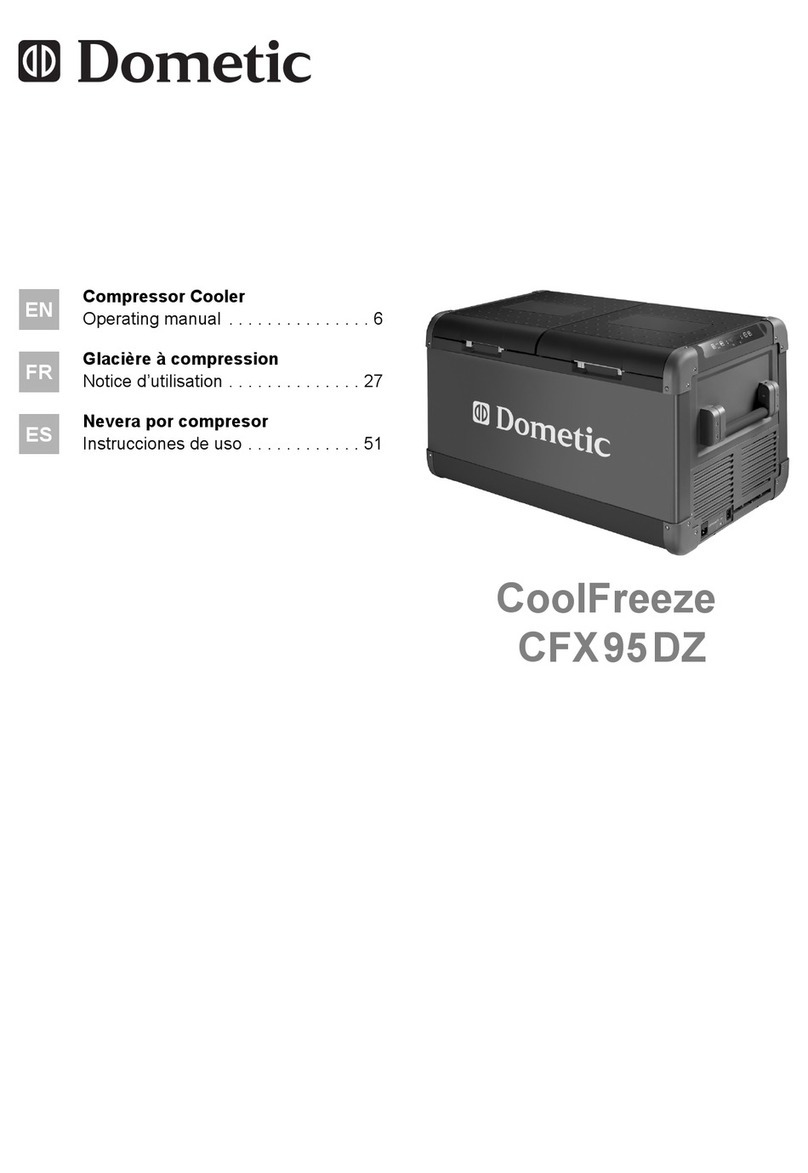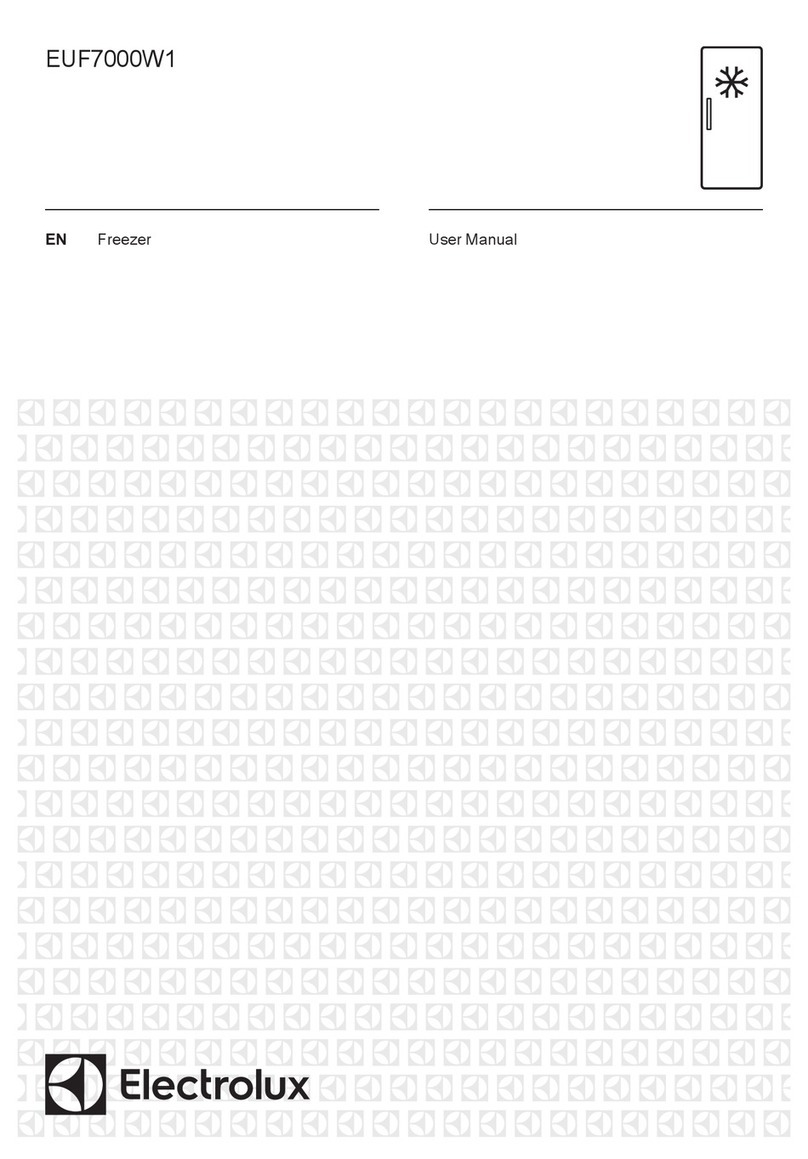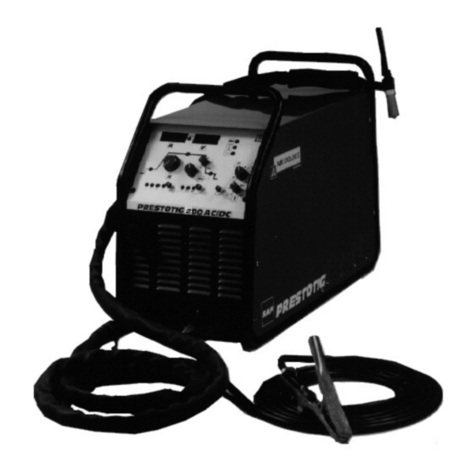Important Safety Instructions
These warnings are provided in the interests of your safety. Ensure you fully understand them before
installing or using the appliance. Your safety is of paramount importance. If you are unsure about
the meaning of these warnings contact the Customer Care Department for assistance.
Intended use
• The freezer is intended for use in the home. It is suitable for the freezing and storing frozen food, as
well as for making ice. If the appliance is used for purposes other than those intended or used incor-
rectly, no liability can be accepted by the manufacturer for any damage that may be caused.
• Alterations or changes to the freezer are not permitted for reasons of safety.
• If you use the freezer in a commercial application or for purposes other than the freezing or frozen
storage of foods, the manufacturer accepts no liability for any damages which may occur.
Prior to initial start–up
• Ensure that the appliance does not stand on the electrical supply cable. Important: if the supply cable
is damaged, it must be replaced by authorised service or qualified personnel using a special cable of the
same type.
• Check the appliance for transport damage. Under no circumstance should a damaged appliance be
plugged in. In the event of damage, please contact your supplier.
Refrigerant
The refrigerant isobutane (R600a) is contained within the refrigerant circuit of the appliance, a natural
gas with a high level of environmental compatibility, which is nevertheless flammable.
• During transportation and installation of the appliance, be certain that none of the components of the
refrigerant circuit become damaged.
• If the refrigerant circuit should become damaged:
– avoid open flames and sources of ignition;
– thoroughly ventilate the room in which the appliance is situated.
Safety of children
• Packaging (e.g. wraps, polystyrene) can be dangerous for children. There is a risk of suffocation! Keep
packaging material away from children!
• Please make old appliances unusable prior to disposal. Pull out the mains plug, cut off the mains cable,
break or remove spring or bolt catches, if fitted. By doing this you ensure that children cannot lock
themselves in the appliance when playing (there is risk of suffocation!) or get themselves into other
dangerous situations.
• Often children cannot recognise the hazards present in household appliances. It is therefore important
that you ensure adequate supervision and never let children play with the appliance!
Daily Operation
• Containers with flammable gases or liquids can leak at low temperatures. There is a risk of an explo-
sion! Do not store any containers with flammable materials such as spray cans, fire extinguisher refill
cartridges etc in the appliance.
• Bottles and cans must not be placed in the freezer. They can burst when the contents freeze, high car-
bonate content drinks can even explode! Never store lemonade, juices, beer, wine, sparkling wine etc. in
the freezer. Exception: high alcohol content spirits can be stored in the freezer.
• Do not put ice creams or ice cubes in the mouth immediately after removal from the freezer. Very cold
ice can freeze to the lips or tongue and cause injury.
• Do not touch frozen food with wet hands. Your hands could freeze to the food.
• Do not operate any electrical appliances in the freezer (e.g. electric ice cream makers, mixers etc.).
• Placing frozen goods on the top of the appliance can lead to the accumulation of condensation in the
cavity of the storag etray through contact with the cold. Electronic components are housed within this
cavity. If condensation should drip onto these components, the appliance could be damaged by a short
circuit. For this reason do not place frozen goods on top of the appliance.
• Before cleaning the appliance, always switch off the appliance and unplug it, or pull the house fuse or
switch off the circuit breaker.
• When unplugging always pull the plug from the mains socket, do not pull on the cable.
In case of malfunction
• If a malfunction occurs on the appliance, please look first in the "What to do if ..." section of these
instructions. If the information given there does not help, please do not perform any further repairs
yourself. 45
